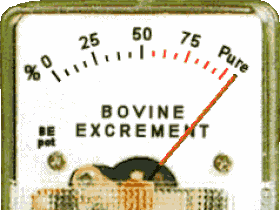New Report: Why most international comparisons of spending & outcomes are total BS!

New Report: http://www.shankerinstitute.org/resource/deconstructing-myth-american-public-schooling-inefficiency
Here’s the summary:
In this paper, we begin by classifying the arguments that assert American schools are relatively inefficient into two categories: the long-term trend argument and the international comparison argument. Our focus herein is on the latter of these two. We then describe two frameworks for approaching either of these arguments: cost efficiency and production efficiency. We explain that the typical spending/outcome model used to make the case that the United States is a relatively inefficient nation is wholly unsuitable for drawing these or any conclusions. Accounting for differences in student populations is helpful, but still inadequate for building a model that can be used to assess a country’s relative efficiency. Evaluating education inputs such as teacher wages and class sizes can further refine comparisons between nations; however, it is unlikely that even these refinements are enough to conduct analyses that can credibly back claims about the relative efficiency of America’s education system. That said, an appropriately limited analysis can still inform our understanding of how the U.S public education system compares with systems in other countries.
What does this all mean?
- First and foremost, we can say with some confidence that existing expositions of U.S. inefficiency (based on Organization for Economic Cooperation and Development [OECD] national spending data and Program for International Student Assessment [PISA] scores) are so lacking in methodological rigor that they are of little if any value in public discourse or for informing national education policies.
- Second, it is unlikely that we could ever obtain data of sufficient precision, accuracy and comparability to meet the demands of more legitimate efficiency modeling for cross-national, intercontinental analyses.
Any and all comparisons using OECD and related data should be conducted with consideration of the limitations discussed herein. But some insights might be drawn from our analyses:
- Among other things, the OECD per-pupil spending measure, as incomparable as it is, shows that the U.S. may have higher per-pupil spending than many nations, but falls right in line with expectations for nations of similar gross domestic product (GDP) per capita.
- The U.S. is both a high-spending and high-GDP country, but some of that high education spending may be a function of the scope of services and expenses included under the education umbrella in the U.S.
- We also know that despite seemingly high spending levels in the United States, teachers’ wages lag with respect to other professions, and the wage lag is not a result of providing relatively smaller class sizes.
- In fact, our primary class sizes (roughly equivalent to schooling provided from about age 5 through 11 or 12 years of age) are average and lower secondary (roughly equivalent to schooling provided from about 12 to 16 years of age)[1] class sizes large. Our wage lag is, to an extent, a function of high non-teaching wages (related to our high GDP per capita), necessarily making it more expensive to recruit and retain a high-quality teacher workforce.
To summarize: The U.S. is faced with a combination of seemingly high education expense, but noncompetitive compensation for its teachers, average to large class sizes, and a high rate of child poverty. Again, it’s hard to conceive how such a combination would render the U.S. comparable in raw test scores New Report: Why most international comparisons of spending & outcomes are total BS! | School Finance 101:
